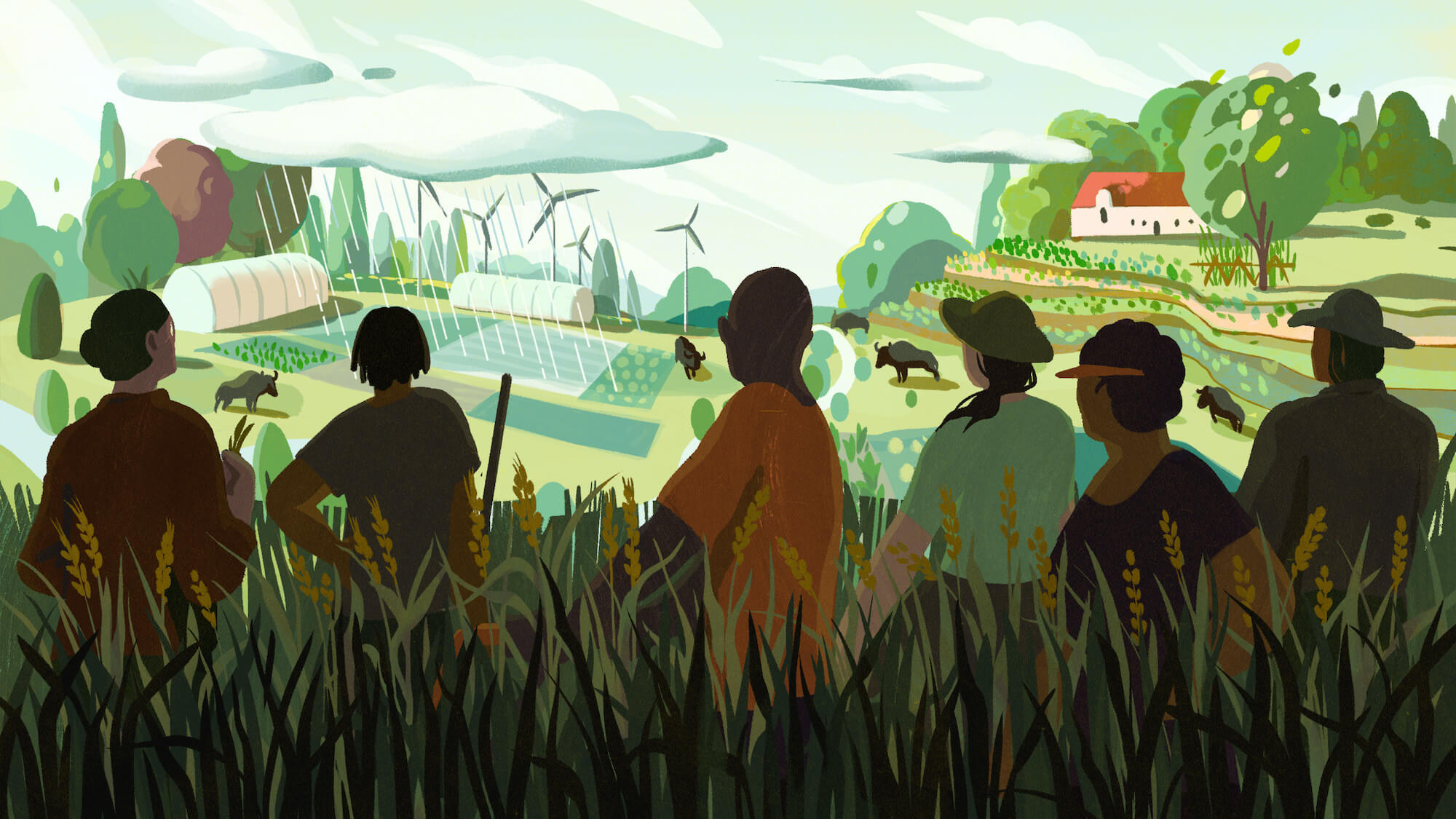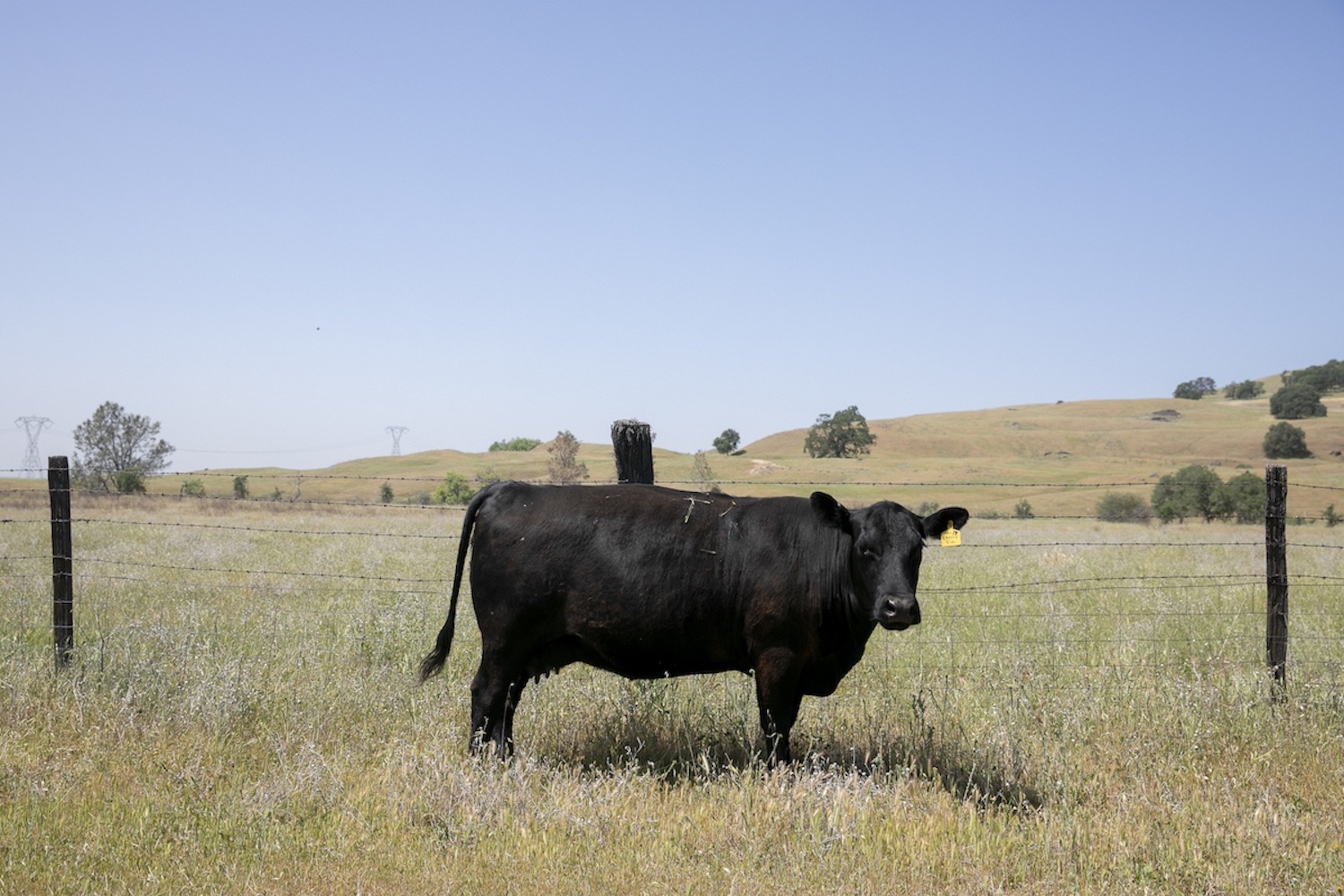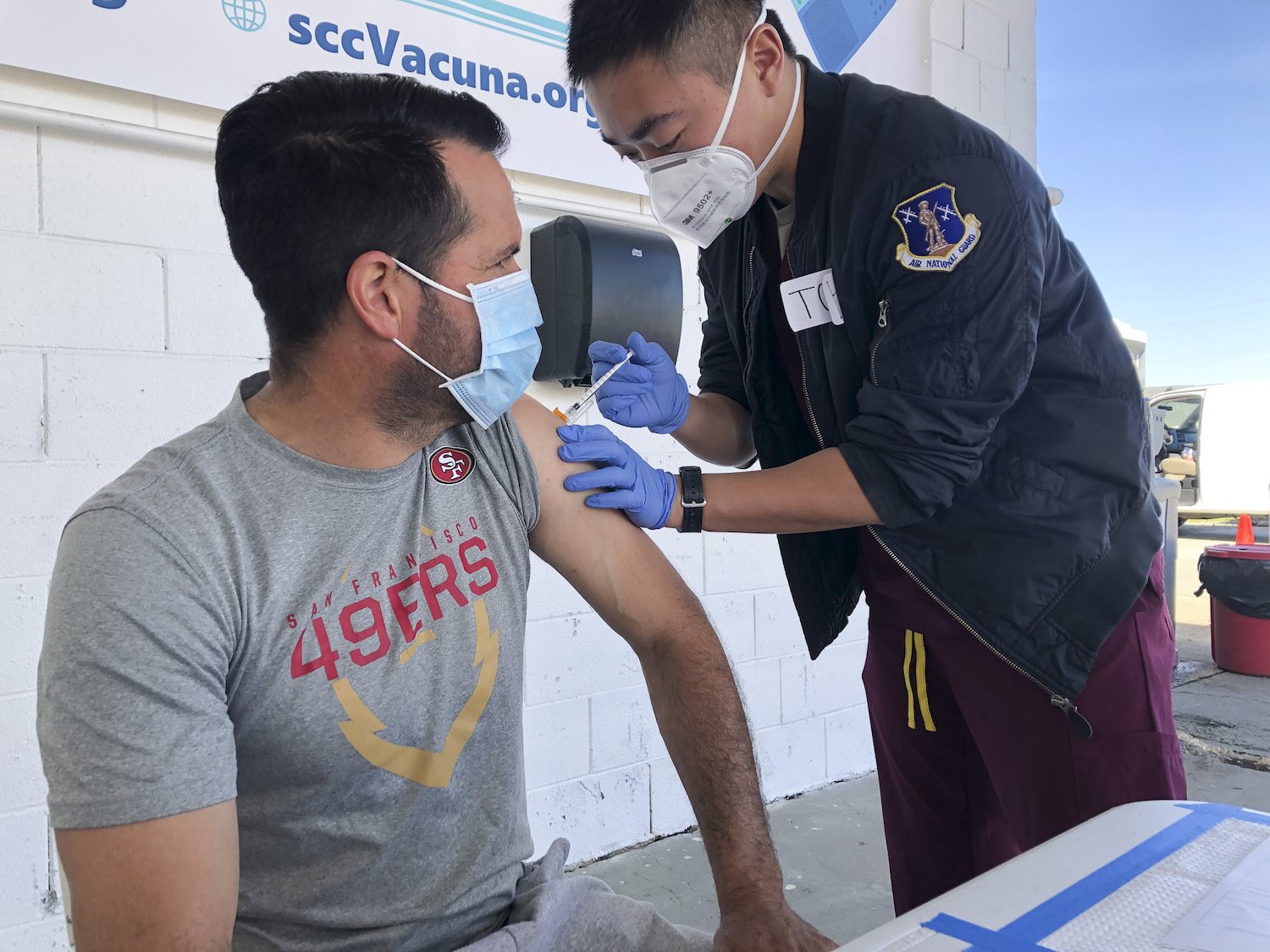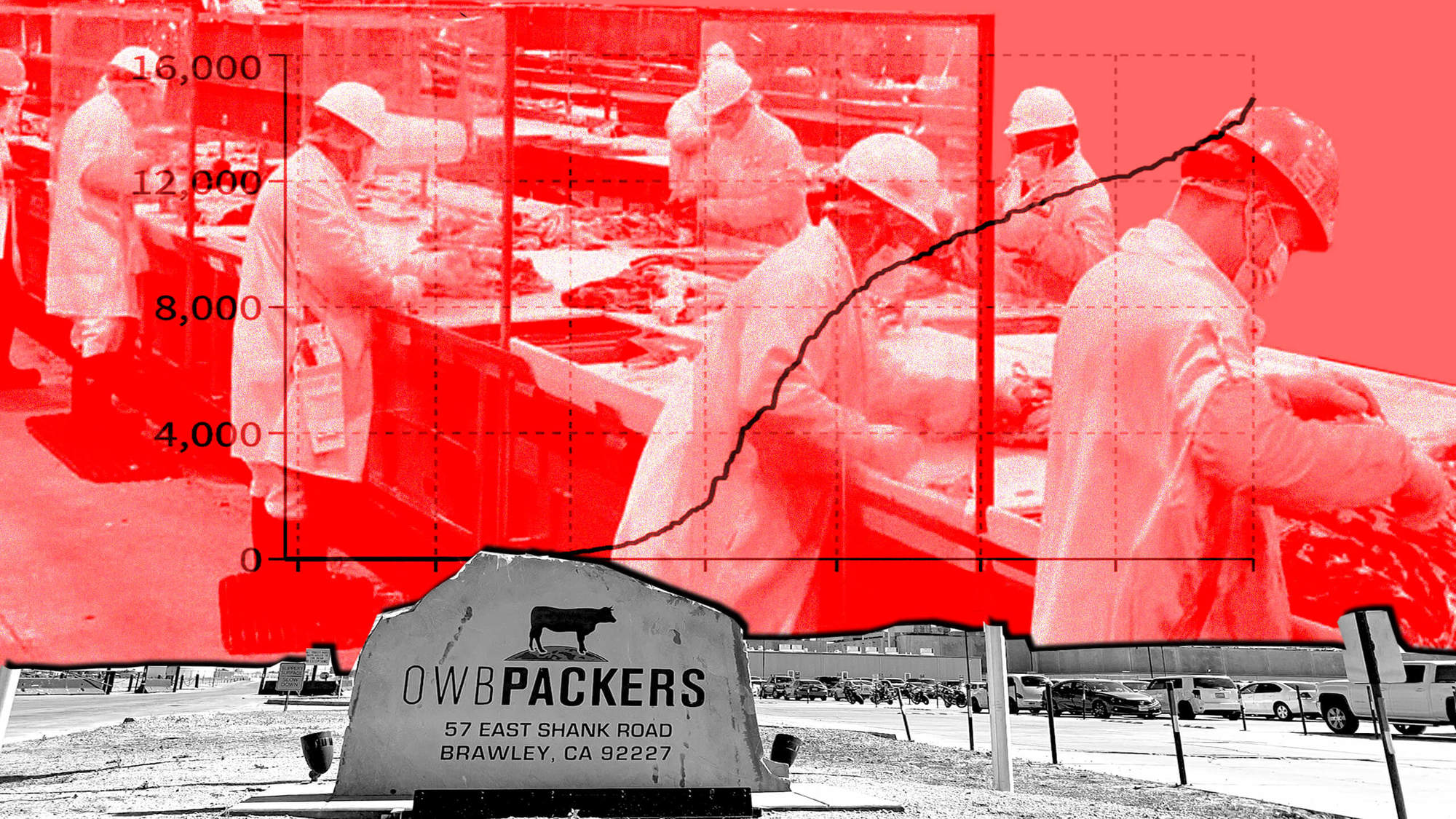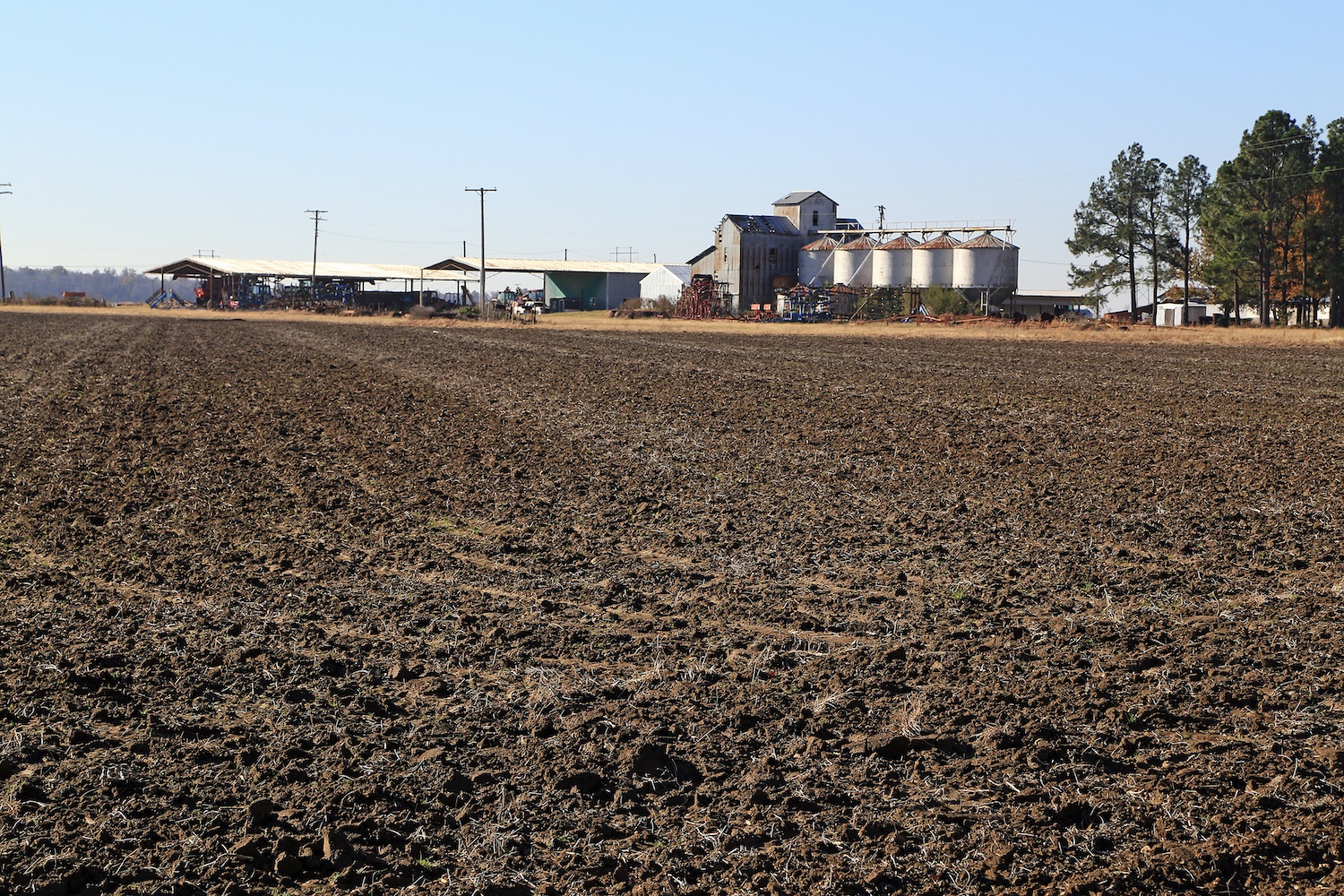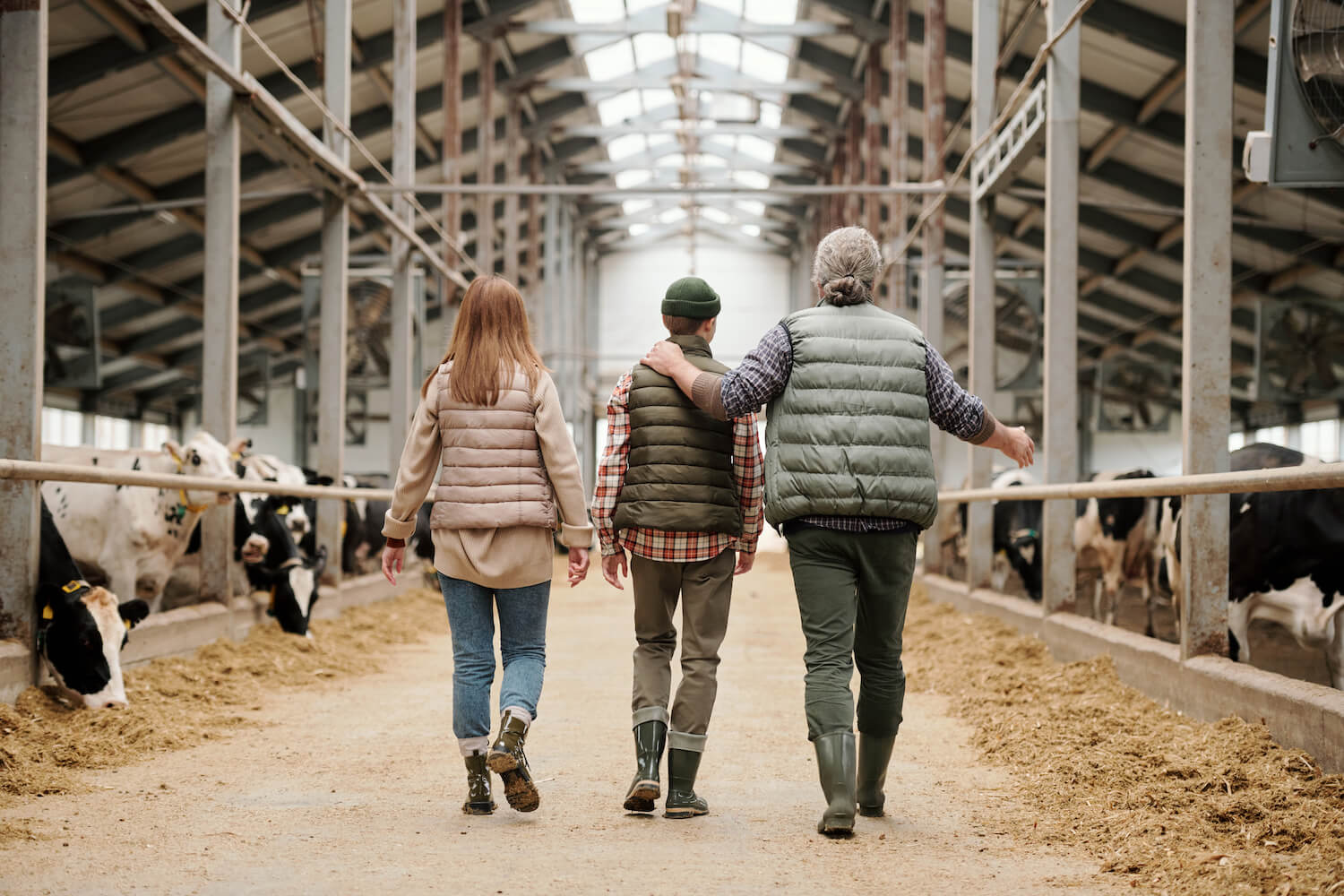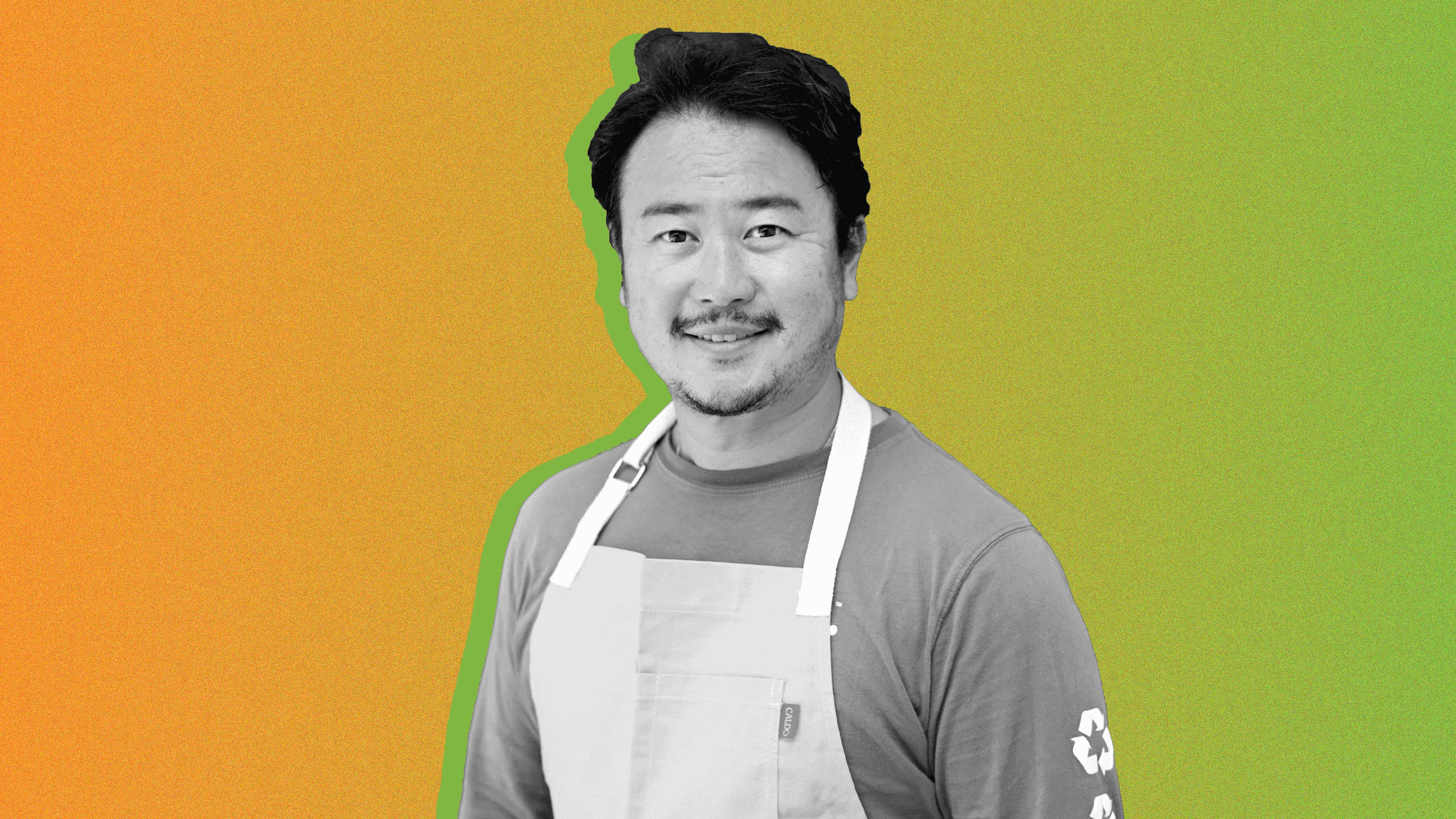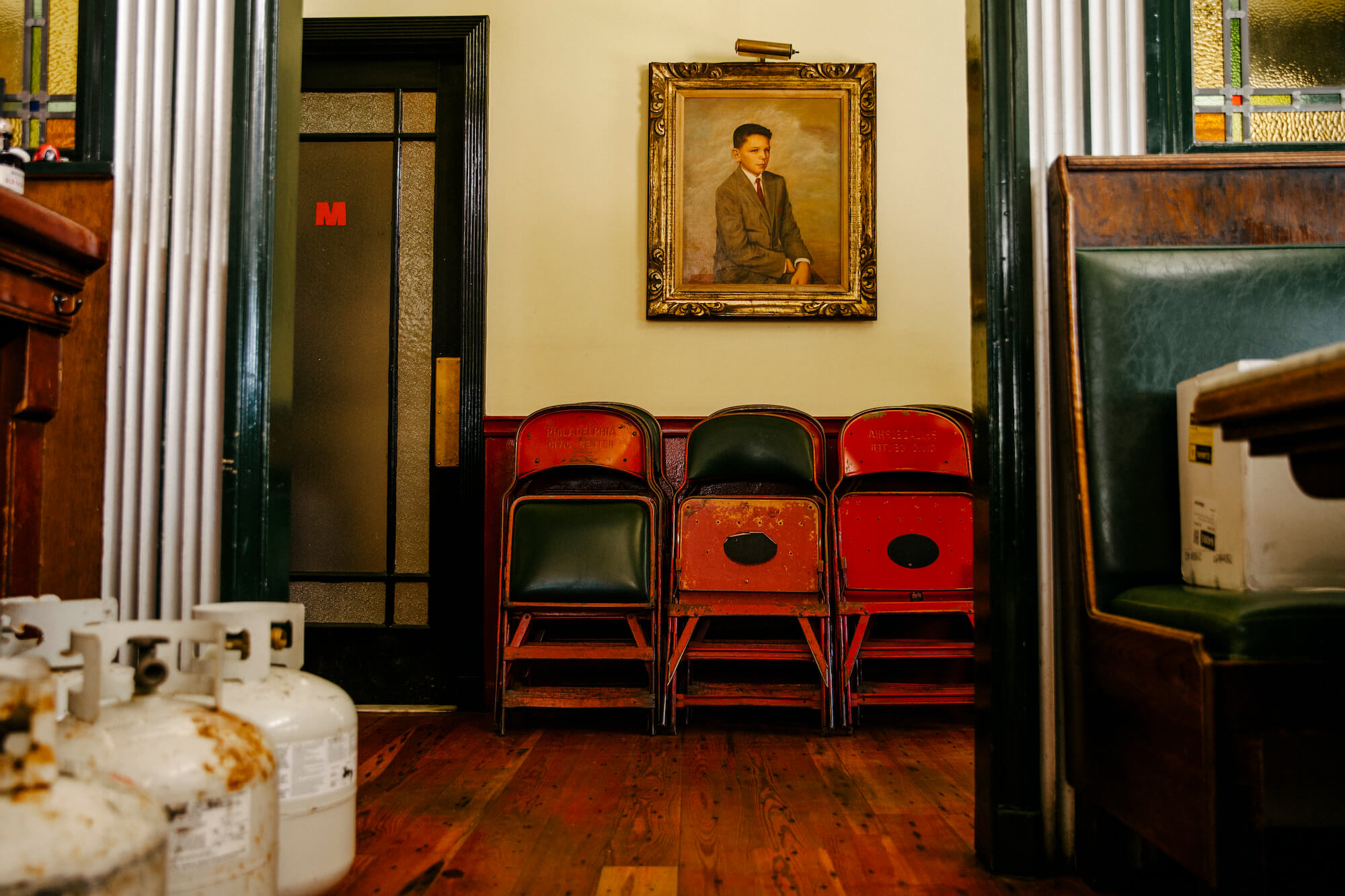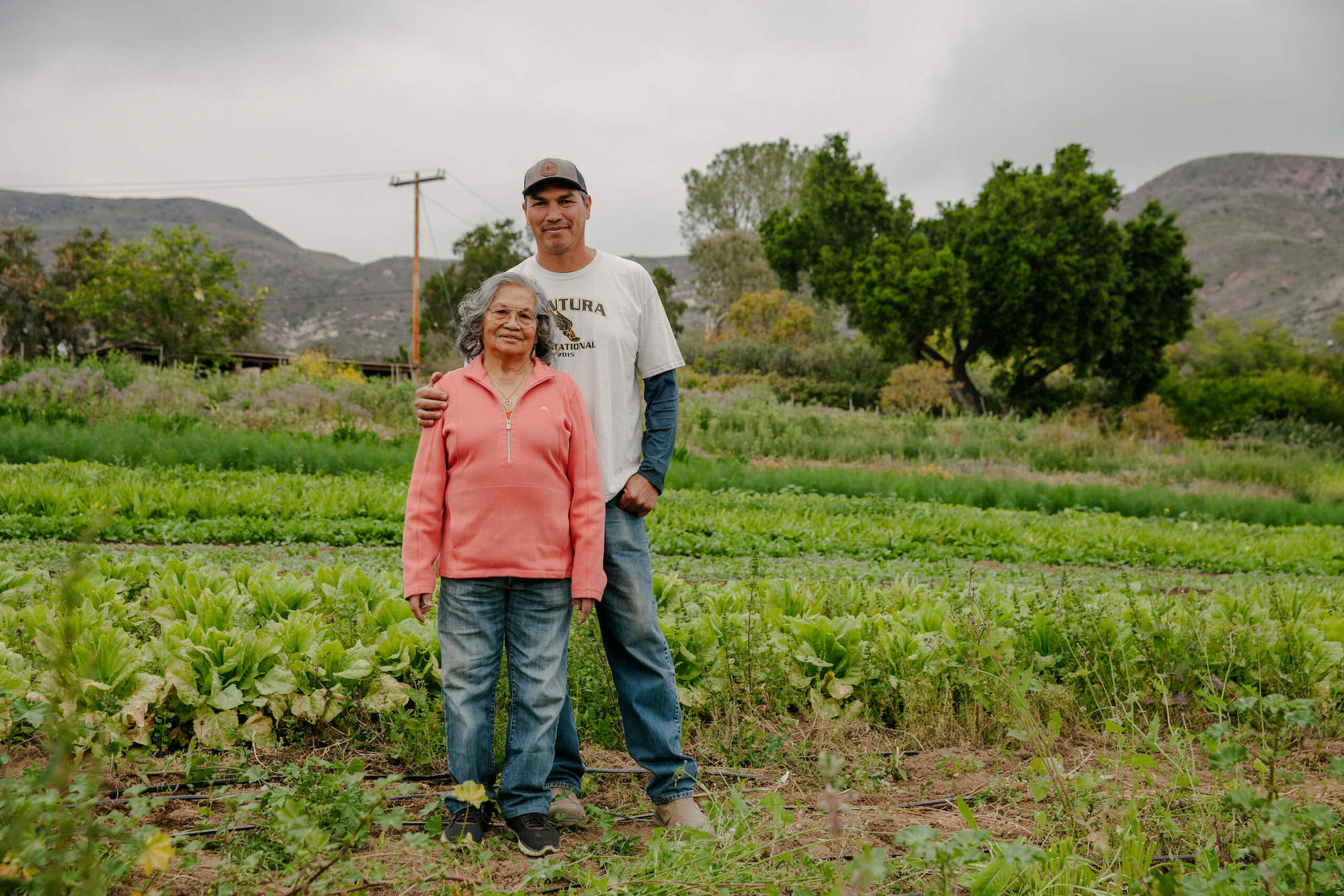
Samanta Helou Hernandez
When restaurants sharply cut back on buying produce, small farmers turned to each other and to an old idea made new: the contactless CSA box.
Back then, the real action began an hour before the Santa Monica farmers’ market opened at 8 on Wednesday mornings. Wholesale customers got a one-hour head-start on civilians, so local chefs, the brain trust of Los Angeles’ burgeoning restaurant scene, started to wander in at 7. A few sent minions to pick up preorders, but many chefs showed up in person to kibitz with farmers whose knowledge often exceeded their own.
Photography by Samanta Helou Hernandez.
Pictured above, Romeo Coleman and his mother, Fidela, stand in a field on Coleman Family Farms.
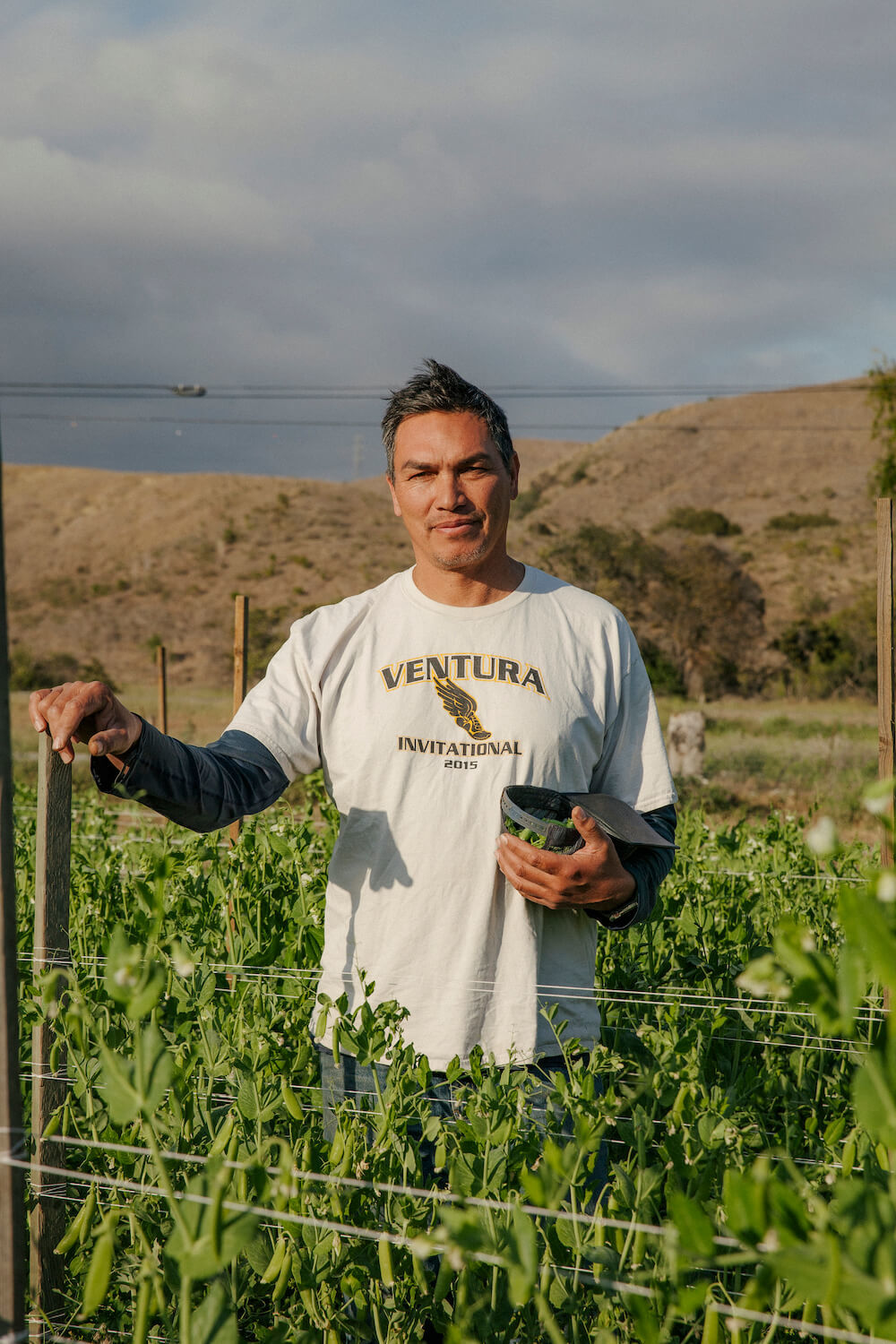
Samanta Helou Hernandez
Romeo Coleman is a second-generation farmer who has 18 acres—6 owned, 12 leased—about 80 miles north of Los Angeles.
“What is this?” I once heard a renowned chef ask a farmer who grew dozens of varieties of Asian greens. He added a case to his order without knowing exactly what he’d do with it, and then hung around to see what his peers were picking up. The air was full of chatter and the sound of dollies and flat carts rolling by. Retail customers were nice, but they represented a sliver of the farms’ income. The first hour, the reliable volume customers, the restaurants: That was where the money was.
We all know what happened next.
Romeo Coleman, a second-generation farmer who has 18 acres about 80 miles north of Los Angeles, saw his family’s fortunes rise in lockstep with the city’s restaurants, which have grown since the 1990s at a clip that would humble the current stock market climb. He planted crops with chefs in mind: As far as he knows, Coleman Family Farms is the only local farm to grow celtuce, a member of the lettuce family, originally from China, that is currently one of the popular kids on the culinary block. He sells two kinds of spigarello, (big-leaf and little), an Italian heirloom cousin of broccoli and kale; herbs like South American huacatay; decorative, edible borage flowers that might show up in a salad or encased in an ice cube for a summer cocktail. Lately the restaurant boom had spread up the coast, closer to home, to Ojai and Santa Barbara. More potential customers everywhere he looked.
Restaurants represented 70 to 75 percent of his business, back in January 2020. Within weeks of the March shutdown that number was in free fall, bottoming out at 25 percent of what he was used to making. And, while Romeo credits the market staff with doing what was necessary to make the market safe for both farmers and customers, occupancy restrictions meant “a huge decrease in customer traffic flow.” Amid headlines about farm crises nationwide, about crops plowed under or left to rot in the field, he needed to find new sources of income, fast. Both the family business and an almost 60-year-legacy depended on him.
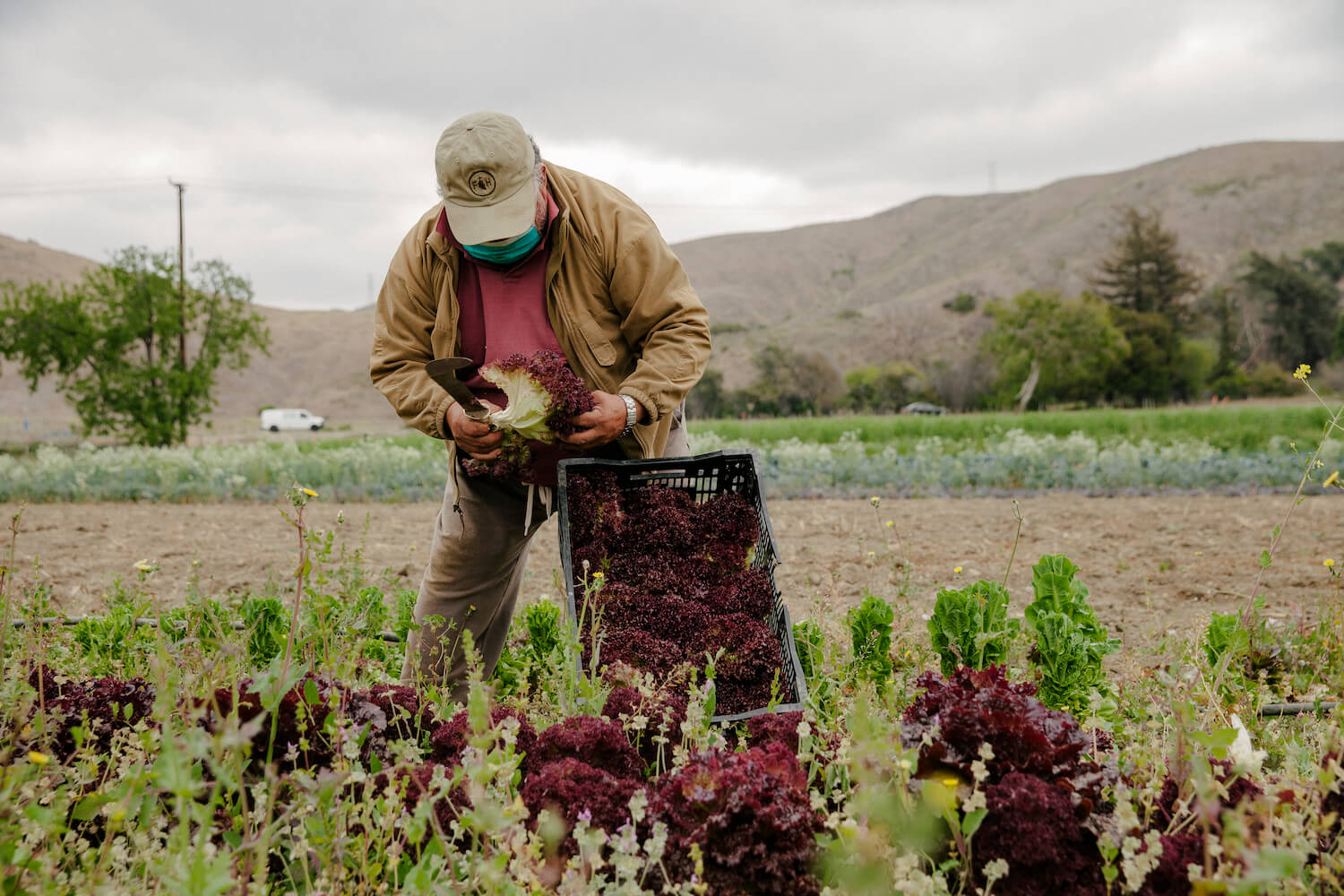
Roberto Perez harvests red leaf lettuce, one of the crops distributed in John Fonteyn’s CSA boxes.
Samanta Helou Hernandez
—
Romeo’s father, Guillermo (“everyone called him Bill”) was born in Santa Barbara to Dust Bowl parents who had made their way West, and he hated his high school phys ed class so much that he was reassigned to the school’s garden to keep the peace. He thrived there. He worked at nearby farms owned by Filipino immigrant families, and in 1963, a single dad with two young sons, was able to purchase six acres in Carpinteria, about 10 miles south, with his parents’ help on the down payment. A few years later a Filipino woman he knew suggested that he write to her sister, back in the Philippines—and after a two-year correspondence he flew there and married her. Together they would have four more children, of whom Romeo, 50, is the eldest.
The land was planted with lemons and avocadoes, and someone else might simply have maintained the existing crops, but Bill wanted to farm row crops, so he tore out what was there and started over with flat Chinese peas, known as snow peas, and other Asian vegetables, which he sold to Chinese restaurants in town. A couple of years later, that decision changed his future: When bad weather decimated the Northern California snow pea crop, Coleman stepped in to fill the void, and made enough money that season to pay off the loan on his farm. He had already paid off his parents; the land was his. In 1979 he and a handful of other local farmers, tired of the long drive to the central produce market in L.A., founded the Santa Barbara farmers’ market.
Romeo started working at the farm full-time in 1996, after he graduated from Cal Poly San Luis Obispo with a degree in crop science, and immediately looked for additional acreage to lease. “I was planning for a different future—mine,” he said. “In order to take care of another family, I would have to expand. Fortunately, it was in time with restaurant demand increasing.” Not so fortunately, urban sprawl had made Southern California property far more valuable than when his father bought land in what was then a nearly-deserted area.
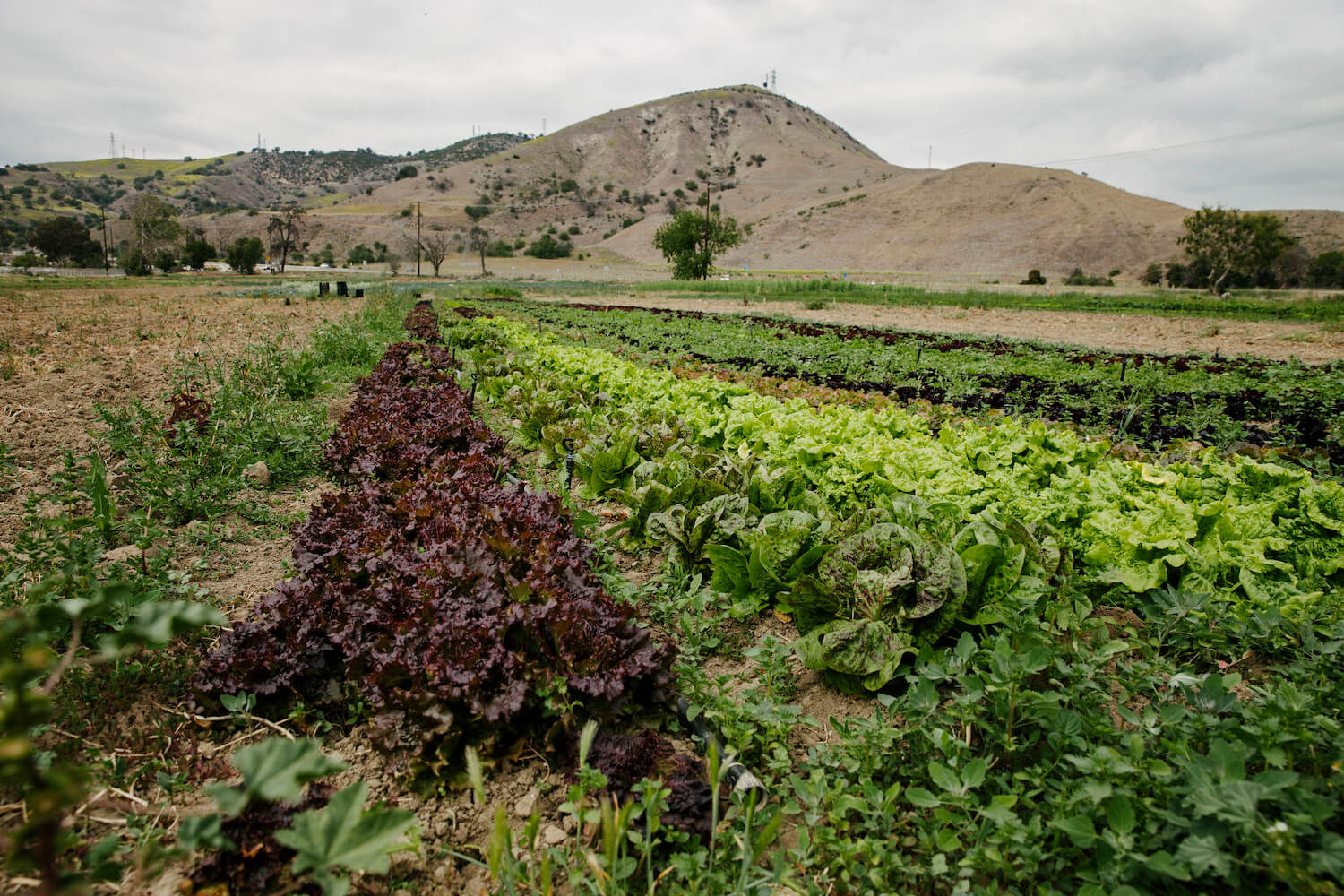
Romeo found 12 acres to lease in 2006, at the end of a curvy road off the 101 freeway in the Carpinteria hills.
Samanta Helou Hernandez
He came up against a hard truth: There’s more profit in selling to a developer than in leasing to a farmer, as suburbs nestle against each other in an ever-lengthening chain. Landowners waiting for the offer they couldn’t refuse signed farmers to month-to-month leases so that they could get out easily when opportunity came calling, and Romeo spent a “very irritating 10 years hopping around places short-term” until he found the 12-acre property he now leases, in Ojai, in 2006.
He planted, he tended, he harvested and he drove—from one farm, then two, over a hill from the leased land to the home where he lives with his wife, Gillian, and their two children, Lukasz and Isabella, and to a growing network of farmers’ markets. At his commuting peak, Coleman had a stand at seven markets, from Goleta, north of Santa Barbara, south to Los Angeles and the San Fernando Valley.
“Everybody had to order in advance. And if you didn’t get an order in, you’re not going to get anything. We had a cut-off time.”
It took over a decade, but by 2009 Romeo was able to cut back from seven farmers’ markets to the two big ones in Santa Monica, thanks to increased restaurant business and free volunteer help from his two younger brothers and his sister, until they grew up and left home. Restaurants had become a dependable, volume business, and they, in turn, relied on him. A farmer with unique and quality produce could call the shots.
“Everybody had to order in advance,” said Coleman, about bygone days. “And if you didn’t get an order in, you’re not going to get anything. We had a cut-off time. If you sent in an order after that, it was, ‘Can we get back to you?’”
When his father died, in 2016, Romeo took over the farm’s thriving operations.
—
John Fonteyn is as garrulous as Romeo Coleman is concise, the public face of the project that pulled them from the edge of the abyss, along with three other row-crop farmers and three orchard owners: A weekly subscription CSA box, a reboot of a CSA program Fonteyn and his wife, Elizabeth Del Nagro, had run years before at their Rio Gozo farm in Ojai. This time there was a new urgency, from both farmers and customers, and Fonteyn got a fast yes when he invited Romeo, whom he had know for years, to participate. They started taking sign-ups in March 2020, and within weeks had 225 subscribers at $30 per box of 10 to 12 items—people who didn’t have a farmers’ market nearby and were afraid to go into a store, people who had access to a farmers’ market and were afraid there, too. People who’d become accustomed to good fresh produce, if only they could find a safe way to acquire it.
John consulted with Romeo and the other participating farmers several times a week to ensure that he wouldn’t end up with boxes that were 80 percent kale. The farmers, for their part, tried to anticipated what home cooks might like. Little Gem lettuce made the cut. Celtuce and spigarello, big and small, did not. The learning curve was just too high. “There’s a lot of exposition for those, for a CSA box,” said Coleman, in terms of telling people what to do with them, and it felt more like a moment for familiarity than experimentation.
They did not go to waste, though. “We have happy neighbors and friends,” said Romeo, “well-fed family and workers, and well-fed animals.”
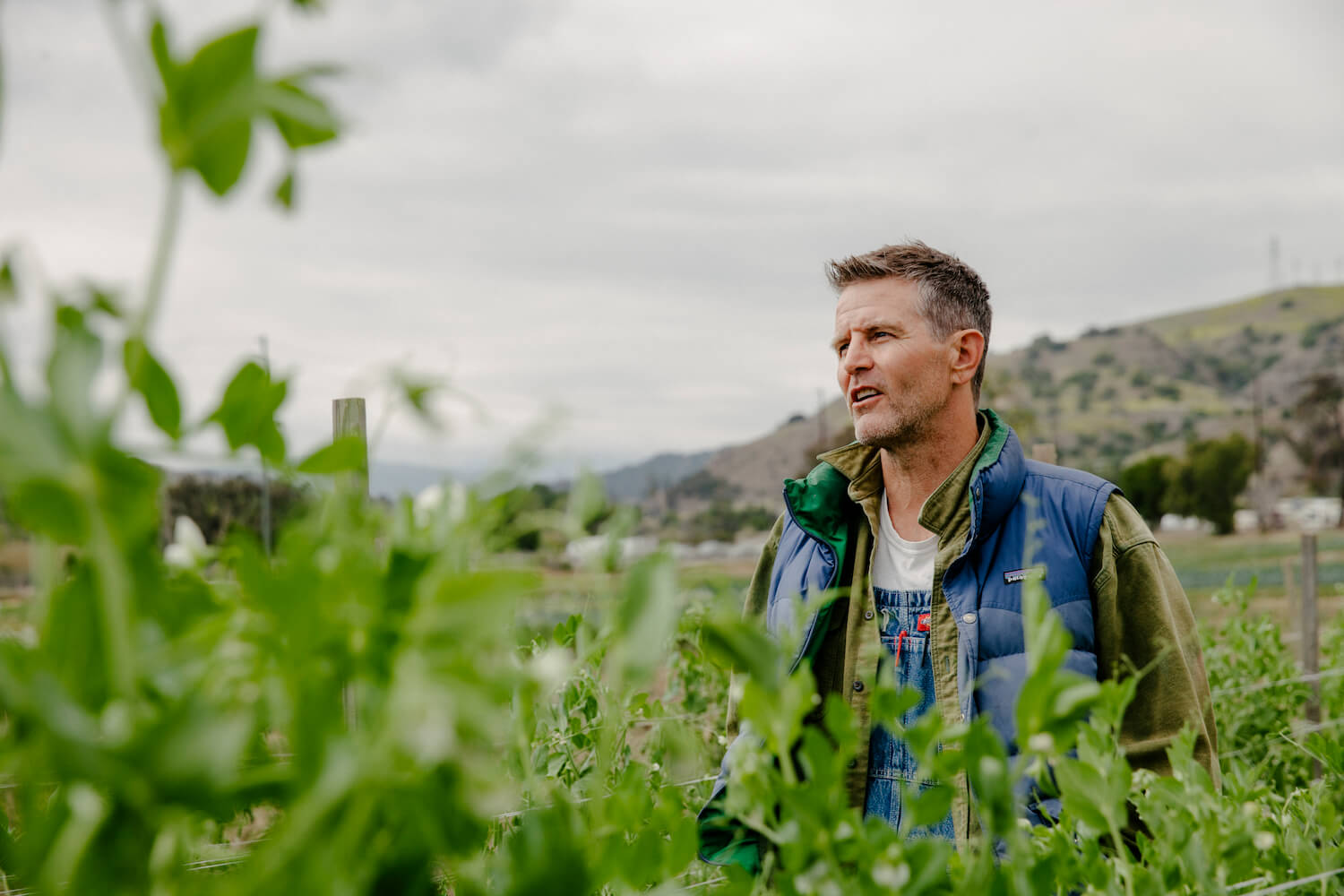
John Fonteyn, left, and his wife, Elizabeth Del Nargo, started their weekly subscription CSA box in March 2020, a reboot of a CSA program they had years before at their Rio Gozo farm in Ojai, after seeing an urgency from both farmers and customers.
Samanta Helou Hernandez
He already planted crops like green onions, fennel, Swiss chard and radishes— produce that customers might find “more relatable.” As other crops came to harvest, and restaurant orders dwindled, he planted more of those familiar items, until about a quarter of his yield fit the CSA profile.
Every week the farmers delivered their designated crops to John, who created the boxes and set out in his Dodge ProMaster van to deliver throughout Ventura County. And every week Coleman Family Farms showed up at the two diminished but determined Santa Monica markets, where the morning’s culinary conversation had been replaced by exchanges about masks and gloves and whether customers could reach in and pick out their own produce, which they could not.
It was a biweekly heartbreaker. “There’s nothing in the world like talking to a chef when you have a great product,” said Coleman. “That’s the golden spot, that’s where it feels really good. So if I had a product I knew was going to go to waste I’d let them know about it, in case they could use it for their take-out business. It was really hard to watch. Nobody came to me for handouts, but some had to say, ‘Can I have 30 days to pay, I don’t have the money right now.’ I’d say, ‘Just use the stuff. You pay me when you can.’”
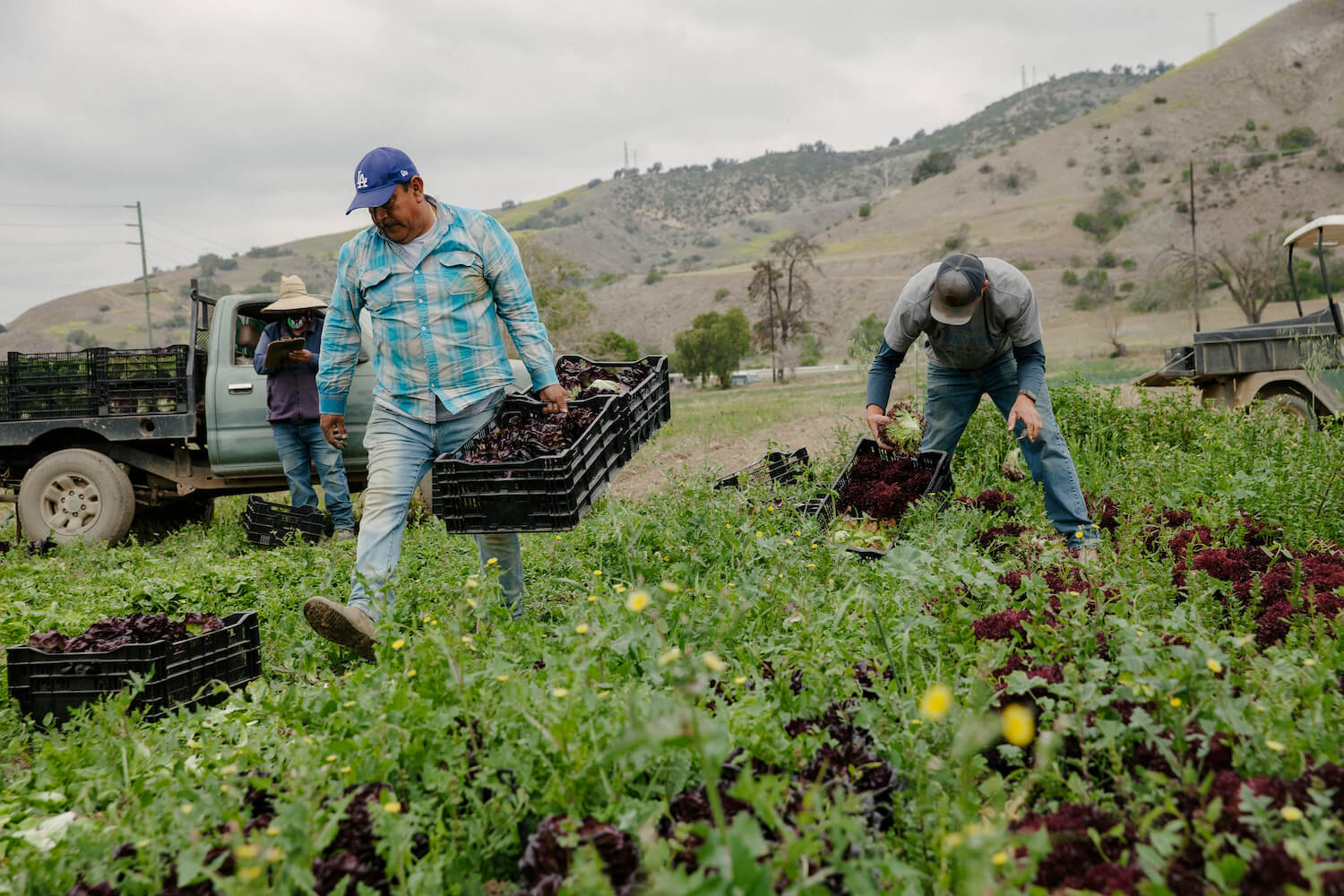
José Martinez, left, Victor Rodriguez, center, and Romeo Coleman, right, harvest produce, some of which is delivered to John Fonteyn’s CSA boxes, while the Coleman Family Farms’ produce is also sold at the Santa Monica markets.
Samanta Helou Hernandez
The CSA boxes helped to pay the bills and keep his seven-person crew employed throughout the worst of the pandemic; nobody went without a paycheck, though he had to dip into the farm’s accounts to help meet expenses. “Owning six acres gives us something to fall back on if all else fails,” he said, but it looks as though that shortfall is coming to an end. Things have started to swing the other way: Restaurants are re-opening, farmers markets are loosening their occupancy restrictions, and people are eager to get back out. Some CSA subscribers decamped—subscriptions now wobble between 150 and 175—as restaurant orders climb back up. Coleman won’t abandon the program, but CSA boxes have assumed the rightful place in his universe, as an adjunct to his restaurant business, “a nice way to pad our pockets a little bit,” he said.
He quickly offered a corrective to that comment, lest the effort sound peripheral.
The man of few words chose emphatic ones. “John is our savior,” he said.
—
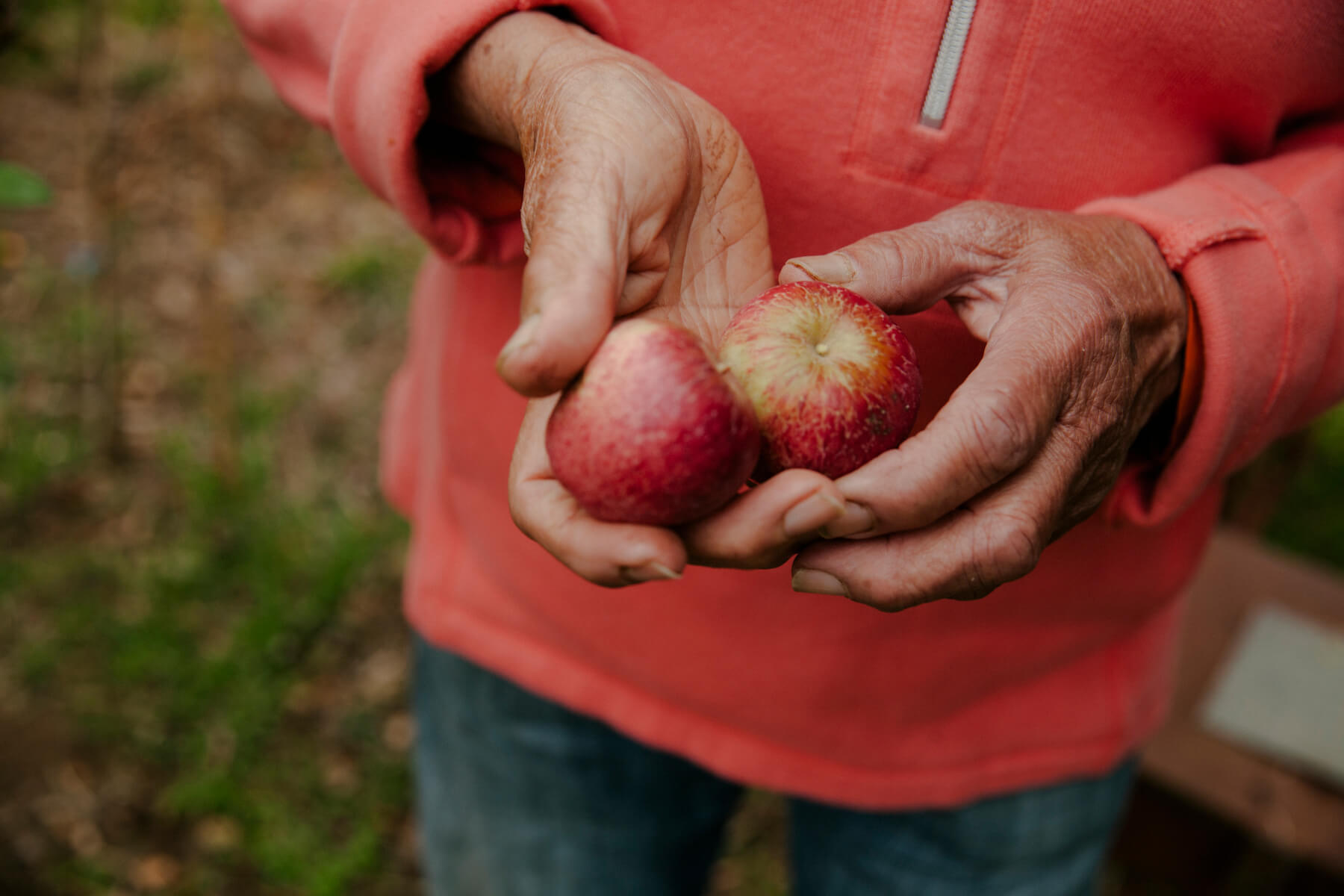
Romeo’s mother, Fidela, likes to walk the fields with him. She holds two Pink Pearl apples in her hands, mindful that photographer Samanta Helou Hernandez and I might not ever have tasted them.
Samanta Helou Hernandez
The family part of Coleman Family Farms, the six-acre parcel Romeo’s father bought, sits at the end of a curvy road off the 101 freeway in the Carpinteria hills, where even an objective journalist can comment that the air feels fresher and lighter without being accused of fudging the facts. Romeo’s mother likes to walk the fields with him, mindful that their visitors—photographer Samanta Helou Hernandez and I—might not ever have tasted a Pink Pearl apple. She and her husband raised six children here, and there are signs of that life everywhere: A large sculpture by Romeo’s brother, Beno, who still helps with the Wednesday market; a truck their grandfather bought after World War II, which Bill would use in 1963 to pull out the trees on the property. Romeo looks from his hilltop to the next one over and reminisces about running down one side and up the other, with his friends, to grab lemons and avocadoes off the trees, sit in their shade, and eat.
Family farms like Coleman—and its 18 acres are at the smallest end of that category—comprise almost 98 percent of farms in the United States, though that number is in constant slow decline, and they produce less than one-fourth of the country’s food. On paper, it’s a losing proposition, but then, not everyone makes decisions based on what’s on paper.
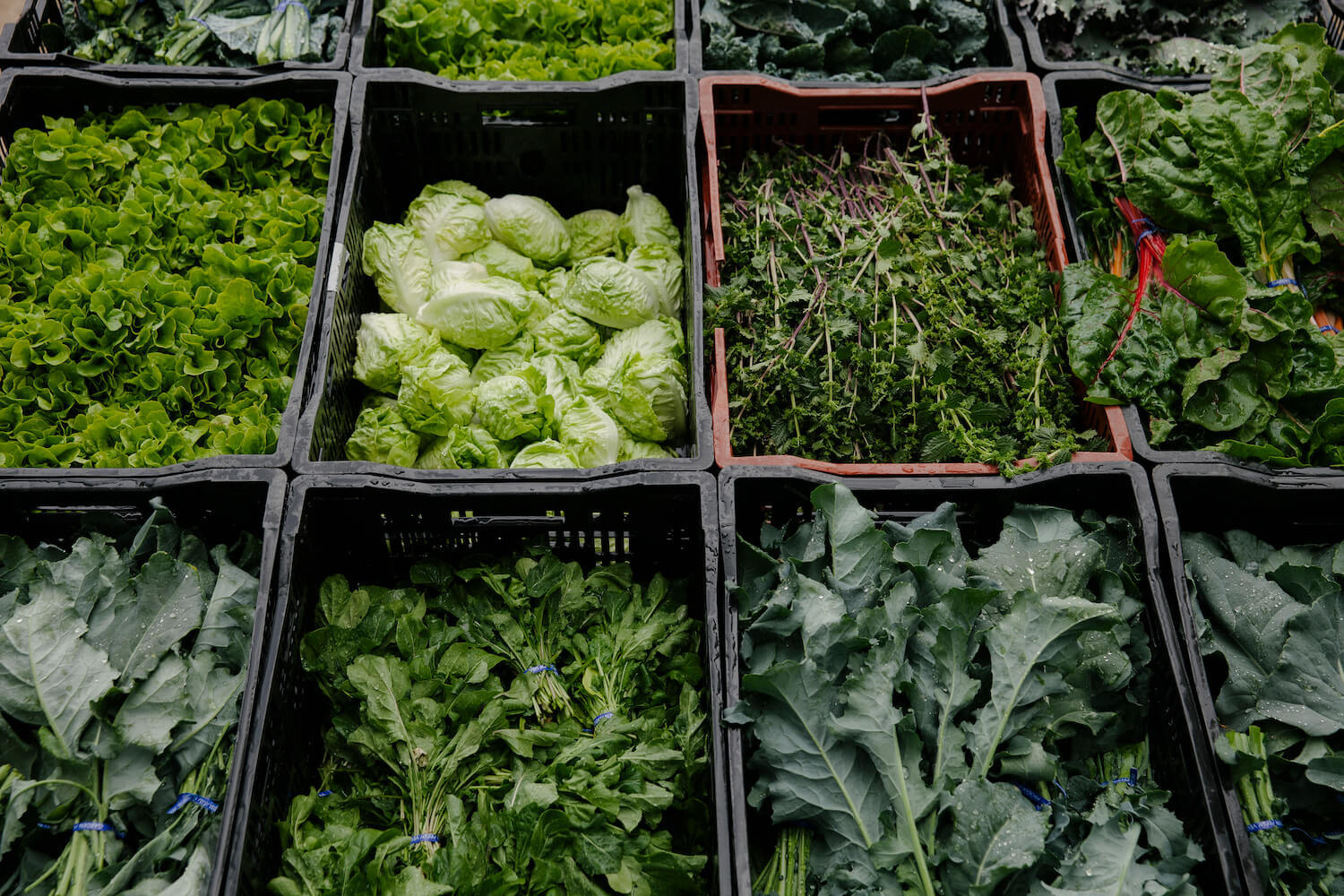
The CSA boxes helped to pay the bills and keep Romeo’s seven-person crew employed throughout the worst of the pandemic; nobody went without a paycheck, though he had to dip into the farm’s accounts to help meet expenses.
Samanta Helou Hernandez
A developer approached Romeo before the pandemic about the possibility of taking a retail space in L.A. where he could sell fresh produce or product, pickles, jams, anything he wanted, with anyone else he might want to bring in. Coleman thought it was a nice opportunity for someone 15 or 20 years younger, and turned him down. He has two teenagers and thinks a father should be around for them. He has the farm and the people who work there, and thinks he should be around for them, too. He is not sentimental, but he does have a short list of what matters to him, and he’s standing right in the middle of it with his mom.
“We have an endless growing season,” he said, “so we have to work an endless growing season. We get three more months, basically, than anyone else. Even if we don’t make as much in winter, the produce doesn’t look as good, it’s harder to do and there’s a higher attrition rate, you can still do it.”
“I like to tell people,” he said, ready to be busy again, “that we work 400 days a year.”

